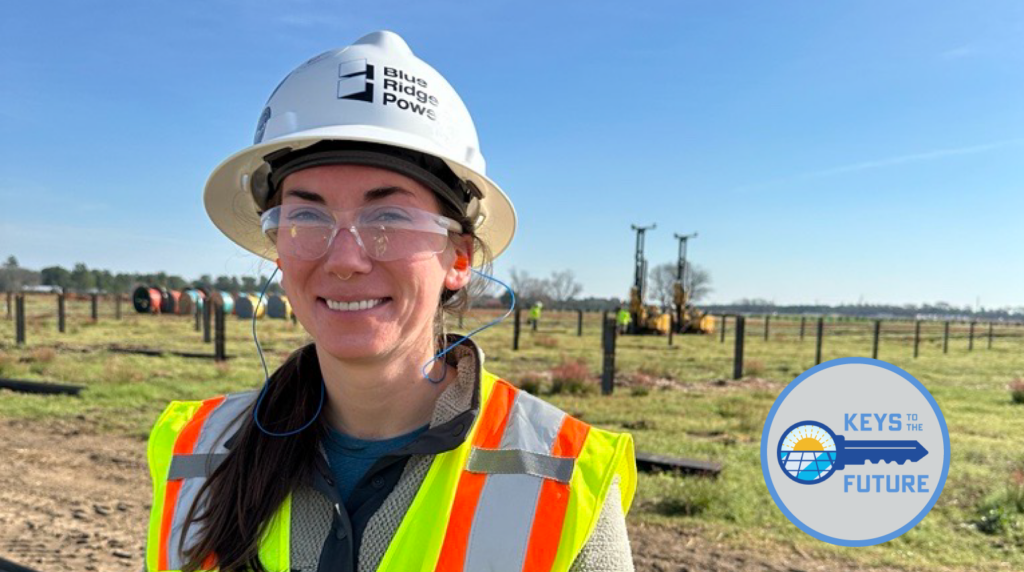“One of the most valuable experiences I’ve had in my role at Blue Ridge Power was taking the OSHA 510 class here. Employees from across the company participated, from Mechanical Foremen to Construction Managers to the Quality team. It was so helpful to hear their conversations related to OSHA standards, what works on site and what doesn’t so we can improve our safety programming and provide more site-specific guidance on implementation.” –Lindsey Glover, Safety Program Specialist
As Blue Ridge Power’s Safety Program Specialist, Lindsey Glover is the company’s safety policy expert, ensuring that our policies comply with OSHA standards and effectively keep employees safe.
But a critical part of developing and refining policies is making sure they are being applied on the ground.
“You can’t create policies in a vacuum,” Lindsey explains. “You have to see them in action. You have to hear from the people who are expected to follow them every day.”
Lindsey is no stranger to taking a collaborative approach to safety and believes it is most effective when all stakeholders have input.

Prior to joining BRP, Lindsey was both a fire fighter and a fire marshal, giving her a breadth of experience with code enforcement. Not only did she learn how to read and apply code, Lindsey also worked with business owners, community leaders and members who didn’t deal with safety on a daily basis: “I learned how to break down the regulations for people who didn’t come from a safety background or have the same stake in it as I did.”
On top of managing fire emergency response plans for our project sites, Lindsey also spends time talking with our craft workforce about their day-to-day experience in the field to see how we can improve our safety practices. Last year, she conducted a noise conservation survey with pile drivers, crew leads and others who have significant noise exposure to make sure workers understand the risk of hearing loss and use proper ear protection to prevent it.
Another way the Safety team gets feedback from the field is through our incident management process—something Lindsey is especially proud of.
“The incident management process takes the fear out of reporting safety incidents or near misses. We encourage people to report so we can learn from our mistakes, not to place blame,” Lindsey emphasizes.
Once a root cause analysis is conducted, Lindsey and the Safety team respond by adjusting our policies to prevent future incidents.
This proactive approach to safety prompts employees to slow down and assess a task or situation for potential risk. Lindsey’s tried-and-true advice is to always trust your gut: “If you see something that doesn’t feel or seem right, it probably isn’t. Don’t be afraid to stop and speak up.”





